Visit to download the full and correct content document: https://ebookmass.com/product/artificial-intelligence-and-quantum-computing-for-adv anced-wireless-networks-savo-g-glisic/

More products digital (pdf, epub, mobi) instant download maybe you interests ...
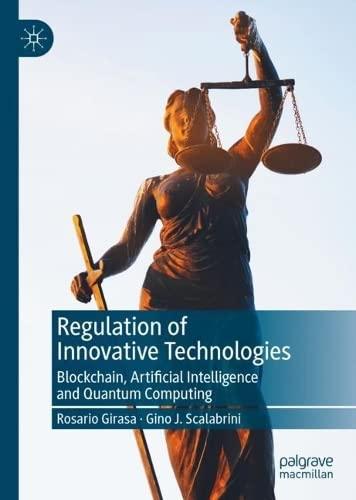
Regulation of Innovative Technologies: Blockchain, Artificial Intelligence and Quantum Computing Rosario Girasa
https://ebookmass.com/product/regulation-of-innovativetechnologies-blockchain-artificial-intelligence-and-quantumcomputing-rosario-girasa/

Artificial Intelligence and Machine Learning for EDGE Computing 1st Edition Rajiv Pandey
https://ebookmass.com/product/artificial-intelligence-andmachine-learning-for-edge-computing-1st-edition-rajiv-pandey/
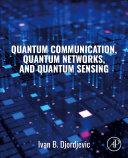
Quantum Communication, Quantum Networks, and Quantum Sensing Ivan Djordjevic
https://ebookmass.com/product/quantum-communication-quantumnetworks-and-quantum-sensing-ivan-djordjevic/
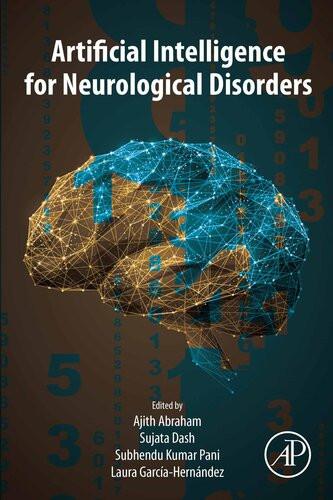
Artificial Intelligence for Neurological Disorders
Abraham
https://ebookmass.com/product/artificial-intelligence-forneurological-disorders-abraham/
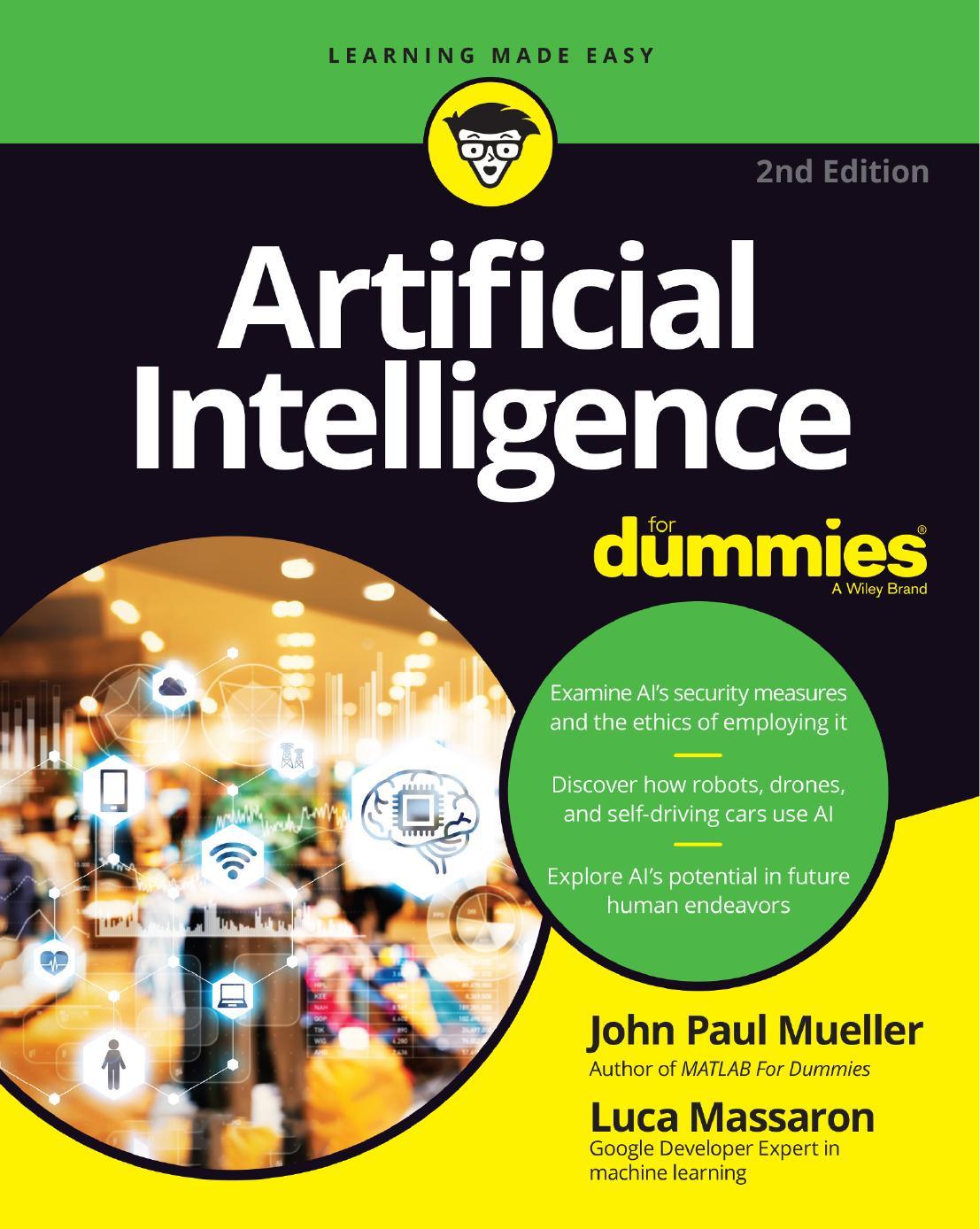
Artificial
Intelligence for Dummies 2nd Edition John Paul Mueller & Luca Massaron
https://ebookmass.com/product/artificial-intelligence-fordummies-2nd-edition-john-paul-mueller-luca-massaron/
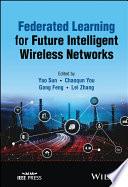
Federated Learning for Future Intelligent Wireless Networks Yao Sun
https://ebookmass.com/product/federated-learning-for-futureintelligent-wireless-networks-yao-sun/
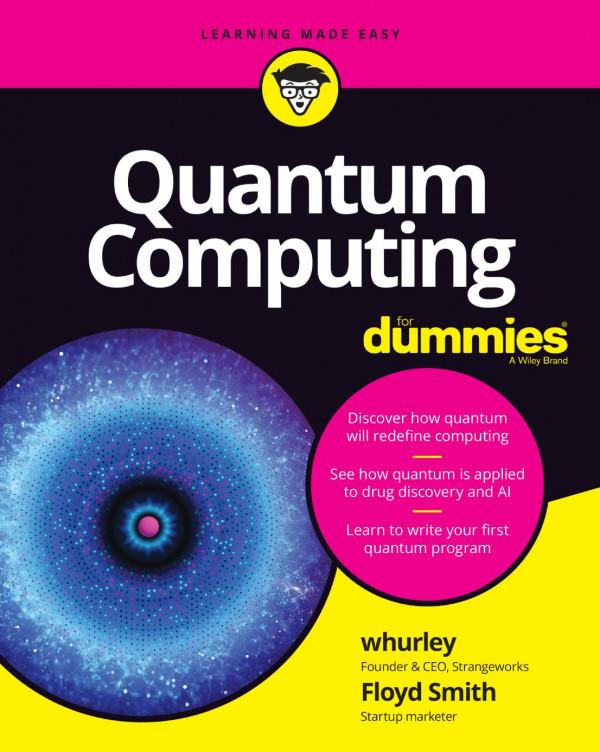
Quantum Computing For Dummies 1st Edition William Hurley
https://ebookmass.com/product/quantum-computing-for-dummies-1stedition-william-hurley/
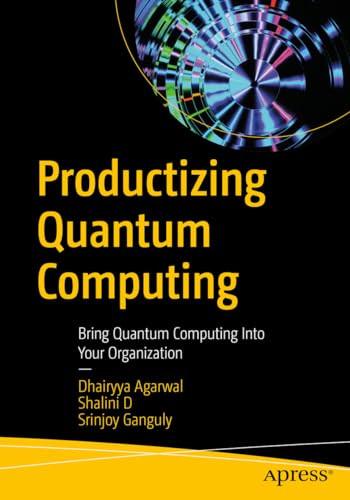
Productizing Quantum Computing: Bring Quantum Computing Into Your Organization 1st Edition Dhairyya Agarwal
https://ebookmass.com/product/productizing-quantum-computingbring-quantum-computing-into-your-organization-1st-editiondhairyya-agarwal/
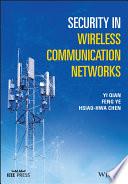
Security in Wireless Communication Networks Yi Qian
https://ebookmass.com/product/security-in-wireless-communicationnetworks-yi-qian/
SAVO GLISIC BEATRIZ LORENZO
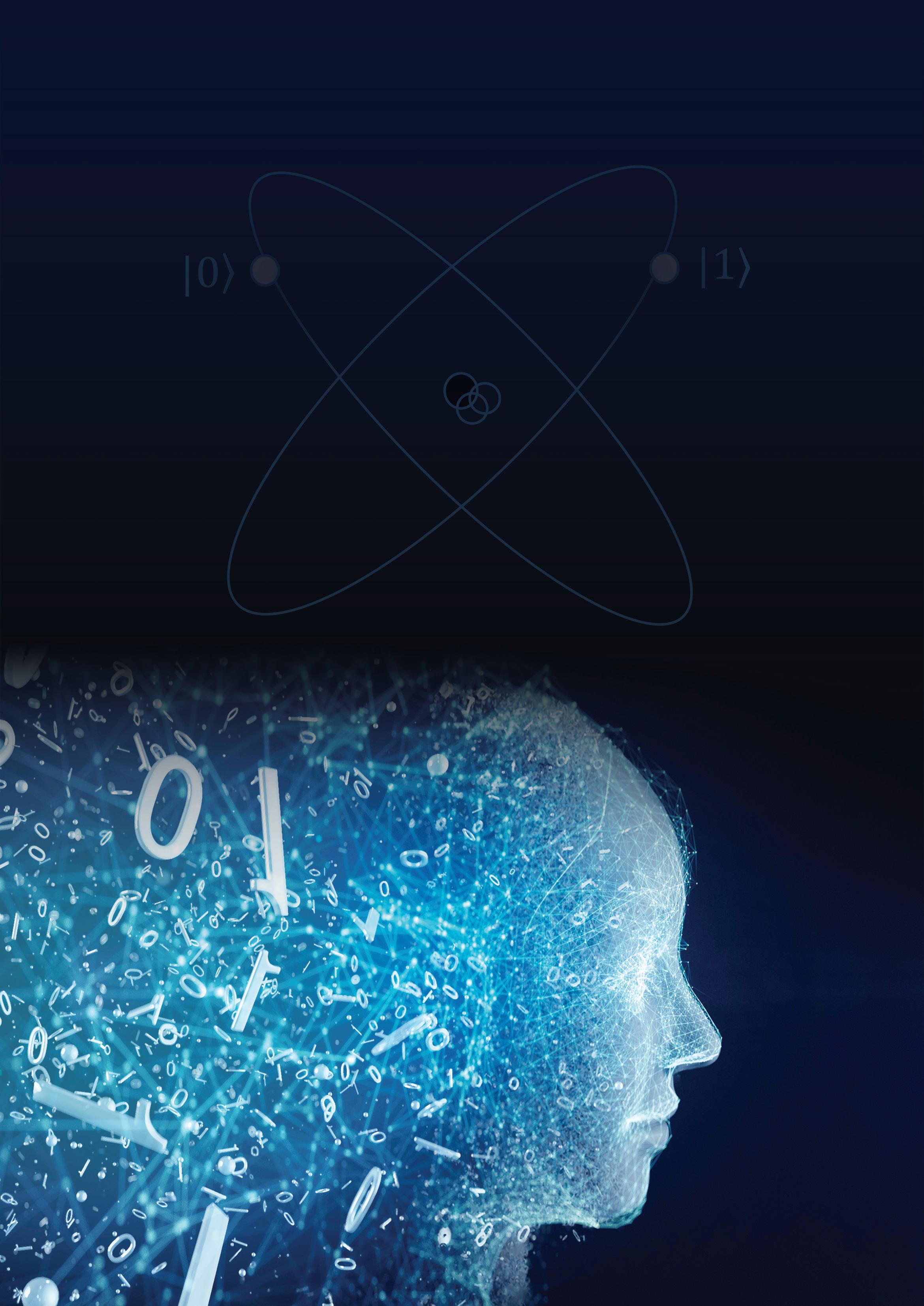
ARTIFICIAL INTELLIGENCE AND QUANTUM COMPUTING FOR ADVANCED WIRELESS NETWORKS
SavoG.Glisic
WorcesterPolytechnicInstitute,Massachusetts,USA
BeatrizLorenzo
UniversityofMassachusetts,Amherst,USA
Thiseditionfirstpublished2022 ©2022JohnWiley&SonsLtd
Allrightsreserved.Nopartofthispublicationmaybereproduced,storedinaretrievalsystem,ortransmitted,inany formorbyanymeans,electronic,mechanical,photocopying,recordingorotherwise,exceptaspermittedbylaw. Adviceonhowtoobtainpermissiontoreusematerialfromthistitleisavailableathttp://www.wiley.com/go/ permissions.
TherightofSavoG.GlisicandBeatrizLorenzotobeidentifiedastheauthorsofthisworkhasbeenassertedin accordancewithlaw.
RegisteredOffices
JohnWiley&Sons,Inc.,111RiverStreet,Hoboken,NJ07030,USA
JohnWiley&SonsLtd,TheAtrium,SouthernGate,Chichester,WestSussex,PO198SQ,UK
EditorialOffice
TheAtrium,SouthernGate,Chichester,WestSussex,PO198SQ,UK
Fordetailsofourglobaleditorialoffices,customerservices,andmoreinformationaboutWileyproductsvisitusat www.wiley.com.
Wileyalsopublishesitsbooksinavarietyofelectronicformatsandbyprint-on-demand.Somecontentthatappearsin standardprintversionsofthisbookmaynotbeavailableinotherformats.
LimitofLiability/DisclaimerofWarranty
Whilethepublisherandauthorshaveusedtheirbesteffortsinpreparingthiswork,theymakenorepresentationsor warrantieswithrespecttotheaccuracyorcompletenessofthecontentsofthisworkandspecificallydisclaimall warranties,includingwithoutlimitationanyimpliedwarrantiesofmerchantabilityorfitnessforaparticularpurpose. Nowarrantymaybecreatedorextendedbysalesrepresentatives,writtensalesmaterialsorpromotionalstatementsfor thiswork.Thefactthatanorganization,website,orproductisreferredtointhisworkasacitationand/orpotential sourceoffurtherinformationdoesnotmeanthatthepublisherandauthorsendorsetheinformationorservicesthe organization,website,orproductmayprovideorrecommendationsitmaymake.Thisworkissoldwiththe understandingthatthepublisherisnotengagedinrenderingprofessionalservices.Theadviceandstrategiescontained hereinmaynotbesuitableforyoursituation.Youshouldconsultwithaspecialistwhereappropriate.Further,readers shouldbeawarethatwebsiteslistedinthisworkmayhavechangedordisappearedbetweenwhenthisworkwas writtenandwhenitisread.Neitherthepublishernorauthorsshallbeliableforanylossofprofitoranyother commercialdamages,includingbutnotlimitedtospecial,incidental,consequential,orotherdamages.
LibraryofCongressCataloging-in-PublicationDataAppliedfor:
HBISBN:9781119790297
CoverDesign:Wiley
CoverImage:©AF-studio/GettyImages;CourtesyofSavoGlisic;©YuichiroChino/Moment/GettyImages
Setin9.5/12.5ptSTIXTwoTextbyStraive,Pondicherry,India 10987654321
Contents
Preface, xiii
PartIArtificialIntelligence, 1
1Introduction, 3
1.1Motivation, 3
1.2BookStructure, 5 References, 11
2MachineLearningAlgorithms, 17
2.1Fundamentals, 17
2.1.1LinearRegression, 17
2.1.2LogisticRegression, 18
2.1.3DecisionTree:RegressionTreesVersusClassificationTrees, 20
2.1.4TreesinRandPython, 23
2.1.5BaggingandRandomForest, 24
2.1.6BoostingGBMandXGBoost, 25
2.1.7SupportVectorMachine, 26
2.1.8NaiveBayes,kNN,k-Means, 29
2.1.9DimensionalityReduction, 35
2.2MLAlgorithmAnalysis, 37
2.2.1LogisticRegression, 37
2.2.2DecisionTreeClassifiers, 39
2.2.3DimensionalityReductionTechniques, 48 References, 52
3ArtificialNeuralNetworks, 55
3.1Multi-layerFeedforwardNeuralNetworks, 55
3.1.1SingleNeurons, 55
3.1.2WeightsOptimization, 57
3.2FIRArchitecture, 60
3.2.1SpatialTemporalRepresentations, 60
3.2.2NeuralNetworkUnfolding, 60
3.2.3Adaptation, 62
3.3TimeSeriesPrediction, 68
3.3.1AdaptationandIteratedPredictions, 68
3.4RecurrentNeuralNetworks, 69
3.4.1FiltersasPredictors, 69
3.4.2FeedbackOptionsinRecurrentNeuralNetworks, 71
3.4.3AdvancedRNNArchitectures, 77
3.5CellularNeuralNetworks(CeNN), 81
3.6ConvolutionalNeuralNetwork(CoNN), 84
3.6.1CoNNArchitecture, 85
3.6.2LayersinCoNN, 87 References, 95
4ExplainableNeuralNetworks, 97
4.1ExplainabilityMethods, 99
4.1.1TheComplexityandInteroperability, 99
4.1.2GlobalVersusLocalInterpretability, 100
4.1.3ModelExtraction, 101
4.2RelevancePropagationinANN, 103
4.2.1Pixel-wiseDecomposition, 104
4.2.2Pixel-wiseDecompositionforMultilayerNN, 107
4.3RuleExtractionfromLSTMNetworks, 110
4.4AccuracyandInterpretability, 112
4.4.1FuzzyModels, 113
4.4.2SVR, 120
4.4.3CombinationofFuzzyModelsandSVR, 123 References, 129
5GraphNeuralNetworks, 135
5.1ConceptofGraphNeuralNetwork(GNN), 135
5.1.1ClassificationofGraphs, 136
5.1.2PropagationTypes, 137
5.1.3GraphNetworks, 143
5.2CategorizationandModelingofGNN, 144
5.2.1RecGNNs, 144
5.2.2 ConvGNNs, 147
5.2.3GraphAutoencoders(GAEs), 152
5.2.4STGNNs, 155
5.3ComplexityofNN, 156
5.3.1LabeledGraphNN(LGNN), 157
5.3.2ComputationalComplexity, 164
Appendix5.ANotesonGraphLaplacian, 170 Appendix5.BGraphFourierTransform, 173 References, 175
6LearningEquilibriaandGames, 179
6.1LearninginGames, 179
6.1.1LearningEquilibriaofGames, 182
6.1.2CongestionGames, 184
6.2OnlineLearningofNashEquilibriainCongestionGames, 196
6.3MinorityGames, 202
6.4NashQ-Learning, 204
6.4.1 Multi-agentQ-Learning, 205
6.4.2Convergence, 207
6.5RoutingGames, 211
6.5.1NonatomicSelfishRouting, 211
6.5.2AtomicSelfishRouting, 214
6.5.3ExistenceofEquilibrium, 216
6.5.4ReducingthePOA, 218
6.6RoutingwithEdgePriorities, 220
6.6.1ComputingEquilibria, 222 References, 224
7AIAlgorithmsinNetworks, 227
7.1ReviewofAI-BasedAlgorithmsinNetworks, 227
7.1.1TrafficPrediction, 227
7.1.2TrafficClassification, 228
7.1.3TrafficRouting, 230
7.1.4CongestionControl, 231
7.1.5ResourceManagement, 233
7.1.6FaultManagement, 234
7.1.7QoSandQoEManagement, 235
7.1.8NetworkSecurity, 236
7.2MLforCachinginSmallCellNetworks, 237
7.2.1SystemModel, 238
7.3Q-Learning-BasedJointChannelandPowerLevelSelectioninHeterogeneousCellular Networks, 243
7.3.1StochasticNoncooperativeGame, 247
7.3.2Multi-AgentQ-Learning, 248
7.3.3Q-LearningforChannelandPowerLevelSelection, 250
7.4MLforSelf-OrganizingCellularNetworks, 252
7.4.1LearninginSelf-Configuration, 254
7.4.2RLforSONCoordination, 256
7.4.3SONFunctionModel, 257
7.4.4ReinforcementLearning, 260
7.5RL-BasedCaching, 267
7.5.1SystemModel, 267
7.5.2OptimalityConditions, 271
7.6BigDataAnalyticsinWirelessNetworks, 274
7.6.1EvolutionofAnalytics, 275
7.6.2Data-DrivenNetworkOptimization, 276
7.7GraphNeuralNetworks, 279
7.7.1NetworkVirtualization, 279
7.7.2GNN-BasedDynamicResourceManagement, 282
7.7.3LearningandAdaptation, 285
7.8DRLforMultioperatorNetworkSlicing, 291
7.8.1SystemModel, 291
7.8.2SystemOptimization, 295
7.8.3GameEquilibriabyDRL, 296
7.9DeepQ-LearningforLatency-LimitedNetworkVirtualization, 302
7.9.1SystemModel, 304
7.9.2LearningandPrediction, 306
7.9.3DRLforDynamicVNFMigration, 310
7.10Multi-ArmedBanditEstimator(MBE), 317
7.10.1SystemModel, 317
7.10.2SystemPerformance, 323
7.11NetworkRepresentationLearning, 327
7.11.1NetworkProperties, 328
7.11.2UnsupervisedNRL, 332
7.11.3Semi-SupervisedNRL, 340 References, 344
PartIIQuantumComputing, 361
8FundamentalsofQuantumCommunications, 363
8.1Introduction, 363
8.2QuantumGatesandQuantumComputing, 372
8.2.1QuantumCircuits, 376
8.2.2QuantumAlgorithms, 381
8.3QuantumFourierTransform(QFT), 386
8.3.1QFTVersusFFTRevisited, 391 References, 396
9QuantumChannelInformationTheory, 397
9.1CommunicationOvera Channel, 398
9.2QuantumInformationTheory, 401
9.2.1DensityMatrixandTraceOperator, 401
9.2.2QuantumMeasurement, 404
9.3 ChannelDescription, 407
9.3.1 ChannelEntropy, 410
9.3.2SomeHistory, 412
9.4 ChannelClassicalCapacities, 414
9.4.1CapacityofClassicalChannels, 415
9.4.2ThePrivateClassicalCapacity, 419
9.4.3TheEntanglement-AssistedClassicalCapacity, 420
9.4.4TheClassicalZero-ErrorCapacity, 421
9.4.5Entanglement-AssistedClassicalZero-ErrorCapacity, 427
9.5 ChannelQuantumCapacity, 431
9.5.1PreservingQuantumInformation, 431
9.5.2QuantumCoherentInformation, 433
9.5.3ConnectionBetweenClassicalandQuantumInformation, 434
9.6QuantumChannelExamples, 437
9.6.1ChannelMaps, 437
9.6.2Capacities, 440
9.6.3QChannelParameters, 440 References, 445
10QuantumErrorCorrection, 451
10.1StabilizerCodes, 458
10.2SurfaceCode, 465
10.2.1TheRotatedLattice, 468
10.3Fault-TolerantGates, 471
10.3.1FaultTolerance, 472
10.4TheoreticalFramework, 474
10.4.1ClassicalEC, 474
10.4.2TheoryofQEC, 478
10.ABinaryFieldsandDiscreteVectorSpaces, 492
10.BSomeNoisePhysics, 494 References, 496
11QuantumSearchAlgorithms, 499
11.1QuantumSearchAlgorithms, 499
11.1.1TheDeutschAlgorithm, 499
11.1.2TheDeutsch–JozsaAlgorithm, 499
11.1.3Simon’sAlgorithm, 500
11.1.4Shor’sAlgorithm, 500
11.1.5QuantumPhaseEstimationAlgorithm, 501
11.1.6Grover’sQuantumSearchAlgorithm, 502
11.1.7Boyer–Brassard–Høyer–TappQSA, 504
11.1.8Dürr–HøyerQSA, 505
11.1.9QuantumCountingAlgorithm, 506
11.1.10QuantumHeuristicAlgorithm, 507
11.1.11QuantumGA, 507
11.1.12Harrow–Hassidim–LloydAlgorithm, 508
11.1.13QuantumMeanAlgorithm, 508
11.1.14QuantumWeightedSumAlgorithm, 509
11.2PhysicsofQuantumAlgorithms, 510
11.2.1ImplementationofDeutsch’sAlgorithm, 511
11.2.2ImplementationofDeutsch–JozsaAlgorithm, 513
11.2.3BernsteinandVazirani’sImplementation, 514
11.2.4ImplementationofQFT, 515
11.2.5EstimatingArbitraryPhases, 516
11.2.6ImprovingSuccessProbabilityWhenEstimatingPhases, 518
11.2.7TheOrder-FindingProblem, 518
11.2.8ConcatenatedInterference, 522 References, 541
12QuantumMachineLearning, 543
12.1QMLAlgorithms, 543
12.2QNNPreliminaries, 547
15.2.2Multiple-ObjectiveOptimizationModel, 713 x Contents
12.3QuantumClassifierswithML:Near-TermSolutions, 550
12.3.1TheCircuit-CentricQuantumClassifier, 552
12.3.2Training, 558
12.4GradientsofParameterizedQuantumGates, 560
12.5ClassificationwithQNNs, 568
12.5.1Representation, 570
12.5.2Learning, 572
12.6QuantumDecisionTreeClassifier, 575
12.6.1ModeloftheClassifier, 575 AppendixMatrixExponential, 579 References, 585
13QCOptimization, 593
13.1HybridQuantum-ClassicalOptimizationAlgorithms, 593
13.1.1QAOA, 598
13.2ConvexOptimizationinQuantumInformationTheory, 601
13.2.1RelativeEntropyofEntanglement, 607
13.3QuantumAlgorithmsforCombinatorialOptimizationProblems, 609
13.4QCforLinearSystemsofEquations, 614
13.4.1AlgorithminBrief, 616
13.4.2DetailedDescriptionoftheAlgorithm, 618
13.4.3ErrorAnalysis, 620
13.5QuantumCircuit, 625
13.6QuantumAlgorithmforSystemsofNonlinearDifferentialEquations, 628 References, 632
14QuantumDecisionTheory, 637
14.1PotentialEnablersforQc, 637
14.2QuantumGameTheory(QGT), 641
14.2.1Definitions, 642
14.2.2QuantumGames, 651
14.2.3QuantumGameforSpectrumSharing, 660
14.3QuantumDecisionTheory(QDT), 665
14.3.1Model:QDT, 668
14.4PredictionsinQDT, 676
14.4.1UtilityFactors, 679
14.4.2ClassificationofLotteriesbyAttractionIndices, 681 References, 688
15QuantumComputinginWirelessNetworks, 693
15.1QuantumSatelliteNetworks, 693
15.1.1Satellite-BasedQKDSystem, 695
15.1.2QSNArchitecture, 696
15.1.3RoutingandResourceAllocationAlgorithm, 699
15.2QCRoutingforSocialOverlayNetworks, 706
15.2.1SocialOverlayNetwork, 707
15.3QKDNetworks, 713
15.3.1QoSinQKDOverlayNetworks, 715
15.3.2AdaptiveQoS-QKDNetworks, 716
15.3.3RoutingProtocolforQKDNetwork, 721 References, 726
16QuantumNetworkonGraph, 733
16.1OptimalRoutinginQuantumNetworks, 733
16.1.1NetworkModel, 735
16.1.2Entanglement, 736
16.1.3OptimalQuantumRouting, 738
16.2QuantumNetworkonSymmetricGraph, 744
16.3QWs, 747
16.3.1DQWL, 748
16.3.2PerformanceStudyofDQWL, 749
16.4MultidimensionalQWs, 753
16.4.1TheQuantumRandomWalk, 755
16.4.2QuantumRandomWalksonGeneralGraphs, 757
16.4.3Continuous-TimeQuantumRandomWalk, 760
16.4.4SearchingLarge-ScaleGraphs, 763 References, 769
17QuantumInternet, 773
17.1SystemModel, 775
17.1.1RoutingAlgorithms, 777
17.1.2QuantumNetworkonGeneralVirtualGraph, 781
17.1.3QuantumNetworkonRingandGridGraph, 782
17.1.4QuantumNetworkonRecursivelyGeneratedGraphs(RGGs), 786
17.1.5RecursivelyGeneratedVirtualGraph, 787
17.2QuantumNetworkProtocolStack, 789
17.2.1Preliminaries, 789
17.2.2QuantumNetworkProtocolStack, 795
17.2.3Layer3 – ReliableStateLinking, 801
17.2.4Layer4 – RegionRouting, 806 References, 814
Index, 821
Preface
Atthisstage,itisanticipatedthat6Gwirelessnetworkswillbebasedonmassiveuseofmachine learning(ML)andartificialintelligence(AI),while7Gwillalreadyincludehybridsofclassicaland quantumcomputing(QC)technologies.Inanticipationofthisevolution‚ wehavestructuredthe booktocontinuouslymove,throughaseriesofchapters,fromthepresentationofMLalgorithmsto thefinalchaptercoveringtheprinciplesofquantuminternet.Inthisprocess,wealsoprovidechapterscoveringthecomplexrelationshipbetweenthetwotechnologies,ontopicssuchasquantum ML,quantumgametheory,andquantumdecisiontheory.ThefocusofthebookisnotontheproblemhowtoconstructaquantumcomputerbutratherhowQCtechnologyenablesnewparadigms inthemodeling,analysis,anddesignofcommunicationnetworks,whatisnowadaysreferredtoas QC-enabledcommunications.Thesenewparadigmsbenefitfromthesignificantcomputation speedupenabledbythecomputingparallelismofquantumcomputersandthenewquantum searchalgorithmsdevelopedsofarforbigdataprocessing.Quantumcryptographyandquantum keydistribution(QKD)enablenewsolutionstotheproblemofsecurityinadvancednetworks. Thisbookisalsodesignedtofacilitateanewconceptineducationinthisfield.Insteadofthe classicalapproachofprovidingalistofproblemsattheendofachapter,weintroduceaseries ofdesignexamplesthroughoutthebookthatrequireteamworkbyagroupofstudentsforsolving complexdesignproblems,includingreproductionoftheresultspresentedinthebook.This approachturnedouttoberatherpopularwithourstudentsatUniversityofMassachusettsat Amherst.Wehopethatthebookprovidesusefulmaterialfornotonlystudentsbutalsofor researchers,educators,andregulatoryprofessionalsinthisfield.
TheAuthors January2021
Amherst,Massachusetts
1.1Motivation
Owingtotheincreaseinthedensityandnumberofdifferentfunctionalitiesinwirelessnetworks, thereisanincreasingneedfortheuseofartificialintelligence(AI)inplanningthenetworkdeployment,runningtheiroptimization,anddynamicallycontrollingtheiroperation.Machinelearning (ML)algorithmsareusedtopredicttrafficandnetworkstateinordertoreserveresourcesfor smoothcommunicationwithhighreliabilityandlowlatencyinatimelyfashion.Bigdatamining isusedtopredictcustomerbehaviorandpre-distribute(caching)theinformationcontentacrossthe networkinatimelyfashionsothatitcanbeefficientlydeliveredassoonasitisrequested.IntelligentagentscansearchtheInternetonbehalfofthecustomerinordertofindthebestoptions whenitcomestobuyinganyproductonline.ThisbookreviewsML-basedalgorithmswithanumberofcasestudiessupportedbyPythonandRprograms.Itdiscussesthelearningalgorithmsused indecisionmakingbasedongametheoryandanumberofspecificapplicationsinwirelessnetworkssuchaschannel,networkstate,andtrafficprediction.
WebeginthebookwithacomprehensivesurveyofAIlearningalgorithms.Thesealgorithmsare usedinthepredictionofthenetworkparametersforefficientnetworkslicing,customerbehavior forcontentcachingacrossthenetwork,orforefficientnetworkcontrolandmanagement.Subsequently,wefocusonnetworkapplicationswithanemphasisonAI-basedlearningalgorithmsused forreachingequilibriaingamesusedamongdifferentpartiesinavarietyofnewbusinessmodelsin communicationnetworks.Thisincludescompetitionbetweennetworkoperators,serviceproviders,orevenusersindynamicnetworkarchitecturesofuser-providednetworks.
ThebookalsocoversindetailanumberofspecificapplicationsofAIfordynamicreadjusting networkbehaviorbasedontheobservationofitsstate,trafficvariation,anduserbehavior.This includeschannelandpowerlevelselectionincellularnetworks,networkself-organization,proactivecaching,bigdatalearning,graphneuralnetwork(GNN),andmulti-armedbanditestimators.
Whyquantumcomputing?Theever-reducingtransistorsizefollowingMoore’slawisapproachingthepointwherequantumeffectspredominateintransistoroperation.Thisspecifictrend impliesthatquantumeffectsbecomeunavoidable,hencemakingresearchonquantumcomputing (QC)systemsanurgentnecessity.Infact,aquantumannealingchipsetisalreadycommercially availablefromD-Wave1.
Apartfromthequantumannealingarchitecture,gate-basedarchitecture,whichrelieson buildingcomputationalblocksusingquantumgatesinasimilarfashiontoclassicallogicgates,
isattractingincreasingattentionduetotherecentadvancesinquantumstabilizercodes,whichare capableofmitigatingthede-coherenceeffectsencounteredbyquantumcircuits.Intermsofimplementation,IBMhasinitiallyproduced53-qubitsquantumcomputer[1]andplanstohave1-million qubitsby2030[2].D-WaveTwo512qubitprocessors[3]arebuiltinGoogleandNASAquantum computer.Withthisrecentdevelopments,Quantumcomputinghasbecomeacommercialreality anditmaybeusedinwirelesscommunicationssystemsinordertospeedupspecificprocessesdue toitsinherentparallelizationcapabilities.
Whereasaclassicalbitmayadoptthevalues0or1,aquantumbit,orqubit,mayhavethevalues |0>,|1>,oranysuperpositionofthetwo,wherethenotation|>isthecolumnvectorofaquantum state.Iftwoqubitsareused,thenthecompositequantumstatemayhavethevalues|00>,|01>, |10>,and|11>simultaneously.Ingeneral,byemployingbbitsinaclassicalregister,oneoutof b2 combinationsisrepresentedatanytime.Bycontrast,inaquantumregisterassociatedwithb qubits,thecompositequantumstatemaybefoundinasuperpositionofallb2 valuessimultaneously.Therefore,applyingaquantumoperationtothequantumregisterwouldresultinaltering allb2 valuesatthesametime.Thisrepresentstheparallelprocessingcapabilityofquantum computing.
Inadditiontosuperiorcomputingcapabilities,multiplequantumalgorithmshavebeenproposed,whicharecapableofoutperformingtheirclassicalcounterpartsinthesamecategories ofproblems,byeitherrequiringfewercomputationalsteps,orbyfindingabettersolutionto thespecificproblem.Inthisbook,wewillfocusontheemploymentofquantumalgorithms inclassicalcommunicationsystems,whichisnowadaysreferredtoasquantum-assisted communications.
Inthefollowingsections,werevisittheMLmethodsinthecontextofquantum-assistedalgorithmsforMLandthequantummachinelearning(QML)framework.Quantumprinciplesbased onemergingcomputingtechnologieswillbringinentirelynewmodesofinformationprocessing. Anoverviewofsupervised,unsupervised,andreinforcementlearning(RL)methodsforQMLis presentedinthissegmentofthebook.
Currently,5Gnetworkshaveenteredintothecommercializationphase,whichmakesitappropriatetolaunchastrongefforttoconceptualizethefuturevisionofthenextgenerationofwireless networks.Theincreasingsize,complexity,services,andperformancedemandsofcommunication networksnecessitateplanningandconsultationforenvisioningnewtechnologiestoenableand harmonizefutureheterogeneousnetworks.AnoverwhelminginterestinAImethodsisseenin recentyears,whichhasmotivatedtheprovisionofessentialintelligenceto5Gnetworks.However, thisprovisionislimitedtotheperformanceofdifferentisolatedtasksofoptimization,control,and management.Therecentsuccessofquantum-assistedanddata-drivenlearningmethodsincommunicationnetworkshasledtotheircandidatureasenablersoffutureheterogeneousnetworks. Thissectionreviewsanovelframeworkfor6G/7Gnetworks,wherequantum-assistedMLand QMLareproposedasthecoreenablersalongwithsomepromisingcommunicationtechnology innovations.
Therelevanceoftheresearchfieldsintegratedthroughoutthisbookcanbeeasilyrecognized withintheNationalScienceFoundation(NSF)listofresearchprioritiesinscienceandtechnology: These10areasspecifiedbyNSFinclude(i)AIandML;(ii)highperformancecomputing,semiconductors,andadvancedcomputerhardware;(iii)quantumcomputingandinformationsystems; (iv)robotics,automation,andadvancedmanufacturing;(v)naturaloranthropogenicdisasterprevention;(vi)advancedcommunicationstechnology;(vii)biotechnology,genomics,andsynthetic biology;(viii)cybersecurity,datastorage,anddatamanagementtechnologies;(ix)advanced
energy;and(x)materialsscience,engineering,andexplorationrelevanttootherkeytechnology areas.The10areaswouldberevisitedeveryfouryears.
1.2BookStructure
ThefirstpartofthebookcoversselectedtopicsinML,andthesecondpartpresentsanumberof topicsfromQCrelevantfornetworking.
Chapter2(MachineLearningAlgorithms):Thischapterpresentsanintroductorydiscussionof manybasicMLalgorithmsthatareoftenusedinpracticeandnotnecessarydirectlyrelatedtonetworkingproblems.However,theywillpresentalogicalbasisfordevelopingmoresophisticated algorithmsthatareusednowadaystoefficientlysolvevariousproblemsinthisfield.Thesealgorithmsincludelinearregression,logisticregression,decisiontree(regressiontreesvs.classification trees),andworkingwithdecisiontrees[4]inRandPython.Inthischapter,weanswerthequestions:Whatisbagging?Whatisrandomforest?Whatisboosting?Whichismorepowerful:GBMor XGBoost?WealsoexplainthebasicsofworkinginRandPythonwithGBM,XGBoost,SVM(supportvectormachine),NaiveBayes,kNN,K-means,randomforest,dimensionalityreductionalgorithms[5,6],gradientboostingalgorithms,GBM,XGBoost,LightGBM,andCatBoost[7,8].
Chapter3(ArtificialNeuralNetworks):Wearewitnessingtherapid,widespreadadoptionofAI [9]inourdailylife,whichisacceleratingtheshifttowardamorealgorithmicsociety.Ourfocusis onreviewingtheunprecedentednewopportunitiesopenedupbyusingAIindeployingand optimizationofcommunicationnetworks.Inthischapter,wewilldiscussthebasisofartificialneuralnetworks(ANNs)[10]includingmultilayerneuralnetworks,trainingandbackpropagation, finite-impulseresponse(FIR)architecturespatialtemporalrepresentations,derivationoftemporal backpropagation,applicationsintimeseriesprediction,auto-regressivelinearprediction,nonlinearprediction,adaptationanditeratedpredictionsaswellasmultiresolutionFIRneural-networkbasedlearningalgorithmappliedtonetworktrafficprediction.Trafficpredictionisimportantfor timelyreconfigurationofthenetworktopologyortrafficreroutingtoavoidcongestionornetwork slicing.
Chapter4(ExplainableNN):EvenwiththeadvancementsofAIdescribedinthepreviouschapter,akeyimpedimenttotheuseofAI-basedsystemsisthattheyoftenlacktransparency.Indeed, theblack-boxnatureofthesesystemsallowspowerfulpredictions,buttheycannotbedirectly explained.ThisproblemhastriggeredanewdebateonexplainableAI(XAI)[11–14].
XAIisaresearchfieldthatholdssubstantialpromiseforimprovingthetrustandtransparencyof AI-basedsystems.ItisrecognizedasthemainsupportforAItocontinuemakingsteadyprogress withoutdisruption.ThischapterprovidesanentrypointforinterestedresearchersandpractitionerstolearnkeyaspectsoftheyoungandrapidlygrowingbodyofresearchrelatedtoXAI.Here, wereviewtheexistingapproachesregardingthetopic,discusstrendssurroundingrelatedareas,and presentmajorresearchtrajectoriescoveringanumberofproblemsrelatedtoExplainableNN.This,in particular,includessuchtopicsasusingXAI:theneedandtheapplicationopportunitiesforXAI; explainabilitystrategies:complexity-relatedmethods,scoop,andmodel-relatedmethods;XAImeasurement:evaluatingexplanations;XAIperception:humanintheloop; XAIantithesis:explainorpredictdiscussion;towardmoreformalism;human-machineteaming;explainabilitymethods composition;otherexplainableintelligentsystems;andtheeconomicperspective.
Chapter5(GraphNeuralNetworks):Graphtheoryisabasictoolformodelingcommunication networksintheformG(N,E),whereNisthesetofnodesandEthesetoflinks(edges)interconnectingthenodes.Recently,themethodologyofanalyzinggraphswithMLhavebeenattracting
increasingattentionbecauseofthegreatexpressivepowerofgraphs;thatis,graphscanbeusedto representalargenumberofsystemsacrossvariousareasincludingsocialscience(socialnetworks) [15,16],naturalscience(physicalsystems[17,18]andprotein–proteininteractionnetworks[19]), knowledgegraphs[20],andmanyotherresearchareas[21]includingcommunicationnetworks, whichisourfocusinthisbook.Asauniquenon-EuclideandatastructureforML,graphanalysis focusesonnodeclassification,linkprediction,andclustering.GNNsaredeep-learning-basedmethodsthatoperateongraphdomain.Duetoitsconvincingperformanceandhighinterpretability, GNNhasrecentlybeenawidelyappliedgraphanalysismethod.Inthischapter,wewillillustrate thefundamentalmotivationsofGNNsanddemonstratehowwecanusethesetoolstoanalyzenetworkslicing.ThechapterincludesGNNmodeling,computationofthegraphstate,thelearning algorithm,transitionandoutputfunctionimplementations,linearandnonlinear(non-positional) GNN,computationalcomplexity,andexamplesofWebpagerankingandnetworkslicing.
Chapter6(LearningEquilibriaandGames):Acomprehensivenetworkoptimizationalso includesthecostofimplementingspecificsolutions.Moregenerally,allnegativeeffectscaused byacertaindecisioninthechoiceofnetworkparameterssuchascongestion,powerconsumption, andspectrummisuse,canbemodeledasacost.Ontheotherhand,mosteconomictheoryrelies onequilibriumanalysis,makinguseofeitherNashequilibriumoroneofitsrefinements[22–31]. OnejustificationofthisistoarguethatNashequilibriummightariseasaresultoflearningand adaptation.Inthischapter,weinvestigatetheoreticalmodelsoflearningingames.Avarietyof learningmodelshavebeenproposed,withdifferentmotivations.Somemodelsareexplicitattempts todefinedynamicprocessesthatleadtoNashequilibriumplay.Otherlearningmodels,suchas stimulusresponseorreinforcementmodels,wereintroducedtocapturelaboratorybehavior.These modelsdifferwidelyintermsofwhatpromptsplayerstomakedecisionsandhowsophisticated playersareassumedtobehave.Inthesimplestmodels,playersarejustmachineswhousestrategies thathaveworkedinthepast.Theymaynotevenrealizetheyareinagame.Inothermodels,players explicitlymaximizepayoffsgivenbeliefsthatmayinvolvevaryinglevelsofsophistication.Thus,we willlookatseveralapproachesincludingbestresponsedynamics(BRD),fictitiousplay(FP),RL, jointutilityandstrategylearning(JUSTE),trialanderrorlearning(TE),regretmatchinglearning, Q-learning,multi-armedbandits,andimitationlearning.
Chapter7(AIAlgorithmsinNetworks):Finally,attheendofPartIofthebook,inthischapterwe presentanextensivesetofexamplesofsolvingpracticalproblemsinnetworksbyusingAI.This includesasurveyofspecificAI-basedalgorithmsusedinnetworks,suchasforcontrolledcaching insmallcellnetworks;channelandpowerlevelselection;controllingnetworkself-organization; proactivecaching;bigdatalearningforAI-controlledresourceallocation;GNNforpredictionof resourcerequirements;andmulti-armedbanditestimatorsforMarkovchannels.
Inparticular,weconsiderAI-basedalgorithmsfortrafficclassification,trafficrouting,congestion control,resourcemanagement,faultmanagement,QualityofService(QoS)andQualityofExperience(QoE)management,networksecurity,MLforcachinginsmallcellnetworks,Q-learningbasedjointchannelandpowerlevelselectioninheterogeneouscellularnetworks,stochasticnoncooperativegame,multi-agentQ-learning,Q-learningforchannelandpowerlevelselection,ML forself-organizingcellularnetworks,learninginself-configuration,RLforSONcoordination,SON functionmodel,RL,RL-basedcaching,systemmodel,optimalityconditions,bigdataanalyticsin wirelessnetworks,evolutionofanalytics,data-drivennetworksoptimization,GNNs,networkvirtualization,GNN-baseddynamicresourcemanagement,deepreinforcementlearning(DRL)for multioperatornetworkslicing,gameequilibriabyDRL,deepQ-learningforlatencylimitednetworkvirtualization,DRLfordynamicVNFmigration,multi-armedbanditestimator(MBE), andnetworkrepresentationlearning.
Chapter8(FundamentalsofQuantumCommunications): Duringthelastfewyears,theresearch communityhasturneditsattentiontoquantumcomputing[32–36]withtheobjectiveofcombining itwithclassicalcommunicationsinordertoachievecertainperformancetargets,suchasthroughput,roundtripdelay,andreliabilitytargetsatalowcomputationalcomplexity.Aswewilldiscussin moredetailinthischapter,therearenumerousoptimizationproblemsinwirelesscommunications systemsthatmaybesolvedatareducednumberofcostfunctionevaluations(CFEs)byemploying quantumalgorithms.Althoughwedonotattempttocovertheproblemsofquantumcomputer designitself,inthischapterwewilldiscussthebasicsofQCtechnologyinordertounderstand betterhowthistechnologycanenablesignificantimprovementsinthedesignandoptimization ofcommunicationnetworks.Thesefundamentalsincludediscussionsonthequbitsystem,algebraicrepresentationofquantumstates,entanglement,geometrical(2D,3D)representationof quantumstates,quantumlogicalgates,tensorcomputing,theHadamardoperatorH,andthePauli andToffoligates.
Chapter9(QuantumChannelInformationTheory):Quantuminformationprocessingexploits thequantumnatureofinformation.Itoffersfundamentallynewsolutionsinthefieldofcomputer scienceandextendsthepossibilitiestoalevelthatcannotbeimaginedinclassicalcommunication systems.Forquantumcommunicationchannels,manynewcapacitydefinitionsweredevelopedin analogywiththeirclassicalcounterparts.Aquantumchannelcanbeusedtoachieveclassicalinformationtransmissionortodeliverquantuminformation,suchasquantumentanglement.Inthis chapter,wereviewthepropertiesofthequantumcommunicationchannel,thevariouscapacity measures,andthefundamentaldifferencesbetweentheclassicalandquantumchannels [37–43].Specifically,wewilldiscusstheprivacyandperformancegainsofquantumchannels, thequantumchannelmap,theformalmodel,quantumchannelcapacity,classicalcapacitiesof aquantumchannel,thequantumcapacityofaquantumchannel,quantumchannelmaps,and capacitiesandpracticalimplementationsofquantumchannels.
Chapter10(QuantumErrorCorrection):Thechallengeincreatingquantumerrorcorrection codesliesinfindingcommutingsetsofstabilizersthatenableerrorstobedetectedwithoutdisturbingtheencodedinformation.Findingsuchsetsisnontrivial,andspecialcodeconstructionsare requiredtofindstabilizerswiththedesiredproperties.Wewillstartthissectionbydiscussing howacodecanbeconstructedbyconcatenatingtwosmallercodes.Otherconstructionsinclude methodsforrepurposingclassicalcodestoobtaincommutingstabilizerchecks[44–47].Here, wewilloutlineaconstructionknownasthesurfacecode[48,49].Therealizationofasurfacecode logicalqubitisakeygoalformanyquantumcomputinghardwareefforts[50–54].Thecodesbelong toabroaderfamilyofso-calledtopologicalcodes[55].Inthisframework,withinthischapterwe willdiscussstabilizercodes,surfacecodes,therotatedlattice,fault-tolerantgates,faulttolerance, theoreticalframework,classicalerrorcorrection,andthetheoryofquantumerrorcorrectionin additiontosomeauxiliarymaterialonbinaryfieldsanddiscretevectorspaces,andnoisephysics.
Chapter11(QuantumSearchAlgorithms):Theappetiteforfaster,morereliable,greener,and moresecurecommunicationscontinuestogrow.Thestate-of-the-artmethodsconceivedforachievingtheperformancetargetsoftheassociatedprocessesmaybeaccompaniedbyanincreaseincomputationalcomplexity.Alternatively,degradedperformancemayhavetobeacceptedduetothe lackofjointlyoptimizedsystemcomponents.Inthischapter,weinvestigatetheemploymentof quantumcomputingforsolvingproblemsinwirelesscommunicationsystems.Byexploitingthe inherentparallelismofquantumcomputing,quantumalgorithmsmaybeinvokedforapproaching theoptimalperformanceofclassicalwirelessprocesses,despitetheirreducednumberofCFEscostfunctionevaluations.InChapter8,wehavealreadydiscussedthebasicsofquantumcomputingusing linearalgebra,beforepresentingheretheoperationofthemajorquantumalgorithmsthathavebeen
proposedintheliteratureforimprovingwirelesscommunicationssystems.Furthermore,inthe followingchapters,wewillinvestigateanumberofoptimizationproblemsencounteredbothin thephysicalandnetworklayerofwirelesscommunications,whilecomparingtheirclassicaland quantum-assistedsolutions.Morespecifically,inthischapterwewilldiscussthefollowing:quantum searchalgorithms(QSAs)forwirelesscommunicationssuchastheDeutschalgorithm,theDeutsch–Jozsaalgorithm,Simon’salgorithm,Shor’salgorithm,thequantumphaseestimationalgorithm, Grover’sQSA,theBoyer–Brassard–Høyer–TappQSA,theDürr–HøyerQSA,quantumcounting algorithm,quantumheuristicalgorithm,quantumgeneticalgorithm,Harrow–Hassidim–Lloyd algorithm,quantummeanalgorithm,andquantum-weightedsumalgorithm.
Chapter12(QuantumMachineLearning):Inthischapter,weprovideabriefdescriptionofquantummachinelearning(QML)anditscorrelationwithAI.WewillseehowthequantumcounterpartofMLismuchfasterandmoreefficientthanclassicalML.Trainingthemachinetolearnfrom thealgorithmsimplementedtohandledataisthecoreofML.Thisfieldofcomputerscienceand statisticsemploysAIandcomputationalstatistics.TheclassicalMLmethod,throughitssubsetsof deeplearning(supervisedandunsupervised),helpstoclassifyimages,recognizepatternsand speech,handlebigdata,andmanymore.Thus,classicalMLhasreceivedalotofattentionand investmentsfromtheindustry.Nowadays,duetothehugequantitiesofdatawithwhichwedeal everyday,newapproachesareneededtoautomaticallymanage,organize,andclassifythesedata. ClassicalML,whichisaflexibleandadaptableprocedure,canrecognizepatternsefficiently,but someoftheseproblemscannotbeefficientlysolvedbythesealgorithms.Companiesengagedin bigdatabasesmanagementareawareoftheselimitations,andareveryinterestedinnew approachestoaccomplishthis.TheyhavefoundoneoftheseapproachesinquantumML.However, theinterestinimplementingthesetechniquesthroughQCiswhatpavesthewayforquantumML. QML[56–59]aimstoimplementMLalgorithmsinquantumsystemsbyusingquantumproperties suchassuperpositionandentanglementtosolvetheseproblemsefficiently.ThisgivesQMLanedge overtheclassicalMLtechniqueintermsofspeedoffunctioninganddatahandling.IntheQML techniques,wedevelopquantumalgorithmstooperateclassicalalgorithmsusingaquantumcomputer.Thus,datacanbeclassified,sorted,andanalyzedusingthequantumalgorithmsofsupervisedandunsupervisedlearningmethods.Thesemethodsareagainimplementedthrough modelsofaquantumneuralnetworkorsupportvectormachine.Thisisthepointwherewemerge thealgorithmsdiscussedinPartsIandIIofthisbook.Inparticular,wewilldiscussQMLalgorithms,quantumneuralnetworkpreliminaries,quantum,classifierswithML:near-termsolutions, thecircuit-centricquantumclassifier,training,gradientsofparameterizedquantumgates,classificationwithquantumneuralnetworks,representation,learning,thequantumdecisiontreeclassifier,andthemodeloftheclassifierinadditiontosomeauxiliarymaterialonmatrixexponential. Chapter13(QuantumComputingOptimization):Convexitynaturallyarisesinmanysegmentsof quantuminformationtheory;thesetsofpossiblepreparations,processes,andmeasurementsfor quantumsystemsareallconvexsets.Manyimportantquantitiesinquantuminformationare definedintermsofaconvexoptimizationproblem,suchasquantifyingentanglement[60,61]. Sincethesetofseparableorunentangledstatesisconvex,ameasureofentanglementmaybe definedforentangledstatesoutsideofthisset,givenasuitable “distance” measure,suchasthe minimumdistancetoastateinside.Perhapsthemostwellknownofthesequantitiesistherelative entropyofentanglement.Inaddition,inthechapterwediscussanumberofoptimizationalgorithmsincludingoptimizationforhybridquantum-classicalalgorithms,thequantumapproximate optimizationalgorithm(QAOA),convexoptimizationinquantuminformationtheory,relative entropyofentanglement,quantumalgorithmsforcombinatorialoptimizationproblems,QCfor linearsystemsofequations,adesignexample(QCformultipleregression),andaquantumalgorithmforsystemsofnonlineardifferentialequations.
Chapter14(QuantumDecisionTheory):Theclassicaldecision-makingprocessismostlybased onexpectedutilitytheory,anditsperformancesignificantlydegradesinscenariosinvolvingrisk anduncertainty[62].Inmostoftheclassicaldecision-makingprocesses,thepossibilityofmakingcorrectpredictionscanbestronglyaffect edbythenatureofthesurroundingenvironment suchastheunknownstochasticorvaryingenvironment.Furthermore,inscenarioshaving incompleteorpartiallyreliableinformationorincompletepreferencerelations,anyprediction islikelytobejustpartialandqualitative.Toaddressthis,quantumdecisiontheory(QDT)seems tobeapromisingapproachandhasbeenalreadyinvestigatedintheexistingliterature[62,63]. Also,theprocessofrepresentingallstepsofa decisionprocessmathematicallyinordertoallow quantitativepredictionissignificantnotonlyforthedecisiontheorybutalsofordevelopingartificialquantumintelligence,whichcanworkonlyfortheoperationsdefinedinmathematical terms[64].
WiththerecentadvancesinquantuminformationandQC,therehasbeenatrendofformulating classicalgametheoryusingquantumprobabilityamplitudestowardanalyzingtheimpactofquantumsuperposition,entanglement,andinterferenceontheagents’ optimalstrategies[65].Quantum gametheory(QGT)ingeneralreplacestheclassicalprobabilitiesofgametheorywithquantum amplitudesbycreatingthepossibilityofneweffectsarisingfromentanglementorsuperposition. Themaindifferencebetweentheclassicalgameandthequantumgameisthatclassicalgamesperformcalculationsintheprobabilityspace,whereasquantumgamesoperateintheHilbertspace. Quantumgametheoretictechniquescanbeutilizedforinvestigatingsuitablesolutionsinquantum communication[66]andquantuminformationprocessing[67].Inthisregard,anarticle[65]providedanintroductiontoquantumtheoryalongwithsomerelatedworksanddiscussedsomewellknownquantumgamesincludingthequantumpennyflip,Eisert’squantumprisoners’ dilemma, andquantumParrondogames.Furthermore,arecentarticle[68]analyzedtheexistingworkson quantumgamesfromthreeperspectives,namely,co-authorship,co-occurrence,andco-citation, andalsoreviewedthemainquantumgamemodelsandapplications.Underthisumbrella,the chapterdiscussesQGT,definitions,quantumgames,adesignexample(quantumroutinggames), quantumgameforspectrumsharing,QDT,amodel(QDT),predictionsinQDT,utilityfactors,and classificationoflotteriesbyattractionindices.
Chapter15(QuantumComputinginWirelessNe tworks):Inthischapter,wediscussseveral examplesofwirelessnetworkdesignbasedonthetoolsenabledbyquantumcomputing.Both satelliteandterrestrialnetworksareconsidered.Traditionalsecuritytechniquesmostlyfocus ontheencryptionofcommunication,wheresecuritydependsonthemathematicalcomplexity. However,encryptionmethodologiesarebecomi nglessreliableaseavesdroppersandattackers aregainingpowerfulcomputingability.AsalreadydiscussedinChapters8and11,quantum cryptographyisanewcryptographictechnologyforgeneratingrandomsecretkeystobeused insecurecommunication.Quantumcryptographycanprovidecommunicationsecuritybased onthelawsofquantumphysics(e.g.,theno-cloningtheoremanduncertaintyprinciple).However,thequantumkeyhastobedistributedoverthecommunicationnetworktobeusedbythe sendersandreceivers.
Reference[69]demonstratedthefeasibilityofquantumkeydistribution(QKD)overopticalnetworks.SuchaQKDnetworkcanbeconstructedbydistributingend-to-endsecret(quantum)keys throughtrustedrepeaters(e.g.,basedonthepoint-to-pointBB84protocol).References[70,71]also reportedsuchoptical-fiber-basedQKDnetworks,usedtosecuremetropolitanandbackbonenetworks.RecentstudiesdiscussedabouttheintegrationofQKDandclassicalnetworks,suchasQKD overwavelengthdivisionmultiplexing(WDM)networks[72,73]andQKD-enabledsoftwaredefinednetworks(SDN)[74].WhileimplementingQKDinterrestrialopticalnetworks,distributing secretkeysoveralongdistance(e.g.,acrosstheglobe)ischallenging.Single-photonsignals
transmittedoverlong-distanceopticalfibersufferfromhighlossesanddepolarization.Hence,carryingthekeysusingopticalfiberoverlongdistances(e.g.,1000km)isnotaneffectivesolution[75].
Toaddresstheselimitations,anexperimentedfree-spaceQKDhasbeenstudiedinrecentyears. Incontrasttoopticalfibers,thefree-spacephotonwillexperiencenegligiblelossinvacuum,makingitfeasibletodistributesecretkeysoverthousandsofkilometers.Althoughtheopticalbeamofa satellite-to-groundlinkcansufferfromatmosphericloss,mostofthespaceisempty,whichmakes thechannellosslessthanthatforalongfiber[75,76].Thequantumsatellite Micius,launchedin 2016forquantumcommunicationexperiments,hassuccessfullydemonstratedsatellite-to-ground QKDusingsingle-photonsource[77].In2017,agroundfree-spaceQKDexperimentwasconducted usingtelecomwavelengthindaylightanddemonstratedthefeasibilityofinter-satelliteQKDindaylight[78,79].Therefore,satellite-basedQKDisapromisingmethodfordistributingquantumkeys betweentwoultra-long-distancepartiesontheground.
Sincethecoverageandflyovertimeofonesatelliteislimited,agroupofquantumsatellitescanbe usedastrustedrepeaterstoservegroundstations.Recently,researchershaveproposeda “network ofquantumsatellites” torealizeglobal-scalequantumcommunications[80,81].Theauthorsof[78] proposedaQKDsatellitenetworksarchitecturebasedonquantumrepeaters.Theresearchersalso proposedthetrusted-repeater-basedsatelliteQKDscheme[79–83].TheirschemeisbasedonBB84 protocolsincequantumrepeatersarestillfarfrombeingimplemented.Reference[84]investigates thepossibleschemesoffree-spaceQKDusinginter-satellitelinksandanalyzedthepropertiesof satellite-groundlinks.Thesestudiesmotivatedtheconceptpresentedhere[85],whichisacontributiontowardtheadvancementofthestateofthe-artinsatellite-basedQKDnetworks.
Priorstudiesenvisionthataquantum-capablesatelliteconstellationcanbeformedtoconstruct globalQKD(similartotraditionalsatelliteconstellationssuchasIRIDIUM[86]).Inrecentproposals,quantumsatelliteswillusealowearthorbit(LEO)tobenefitfromitslowchannelloss.Buta LEOsatellitecanaccessaparticulargroundstationforalimitedtimeoftheday[87].Thislimited coveragemayleadtoashortageofsecretkeysbetweensatelliteandground.Bycontrast,geostationaryearthorbit(GEO)satellitescanaccessgroundstationscontinuously,allday.However,their signalcansufferfromhighchannellossandalimitedkeygenerationrate.
In2017,GermanresearcherssuccessfullymeasuredquantumsignalsthatweresentfromaGEO toagroundstation[88].Italianresearchershavealsodemonstratedthefeasibilityofquantumcommunicationsbetweenhigh-orbitingglobalnavigationsatellitesandagroundstation[89].The ChineseAcademyofScienceshasfutureprojectstolaunchhigher-altitudesatellites[77–79]. Accordingtotheresearchers,thefuturequantumsatelliteconstellationwillcomprisesatellitesin highandloworbits[90].Thus,combiningbothGEOandLEOsatellitestobuildQKDnetworks isaresearchdirectionworthexploring.Withinthisscope,inthischapterwewilladdressthefollowingproblems:quantumsatellitenetworks,satellite-basedQKDsystem,quantumsatellitenetwork architecture,aroutingandresourceallocationalgorithm,QCroutingforsocialoverlaynetworks, socialoverlaynetworks,amultiple-objectiveoptimizationmodel,QKDNetworks,QoSinQKD overlaynetworks,adaptiveQoS-QKDnetworks,andaroutingprotocolforQKDnetworks.
Chapter16(QuantumNetworkonGraph)
Tofullybenefitfromtheadvantagesofquantum technology,itisnecessarytodesignand implementquantumnetworks[91,92]thatareabletoconnectdistantquantumprocessors throughremotequantumentanglementdistribution.However,despitethetremendousprogress ofquantumtechnologies,efficientlong-distance entanglementdistributionremainsakeyproblem,duetotheexponentialdecayofthecommunicationrateasafunctionofdistance[93,94]. Asolutiontocounteracttheexponentialdecaylo ssistheadoptionofquantumrepeaters[95,96]. Insteadofdistributingentanglementoveralonglink,entanglementwillbegeneratedthrough
shorterlinks.Acombinationofentanglementswapping[97]andentanglementpurification[98] performedateachquantumrepeaterenablesth eentanglementtobeextendedovertheentire channel.Nowasimplequestionarises: “ whendoesarepeaterensurehigherentanglement distributionoverthedirectlonglink? ”
Differentfromclassicalinformation,quantuminformation(e.g.,qubits)cannotbecopieddueto theno-cloningtheorem[99,100].Hence,quantumnetworksrelyonthequantumteleportation process(Chapter8),[101]asauniquefeasiblesolution,transmittingaqubitwithouttheneed tophysicallymovethephysicalparticlestoringthequbit.Thequantumteleportationofasingle qubitbetweentwodifferentnodesrequires(i)aclassicalcommunicationchannelcapableofsendingtwoclassicalbitsand(ii)thegenerationofapairofmaximallyentangledqubits,referredtoas Einstein–Podolsky–Rosen(EPR)pair,witheachqubitstoredateachremotenode.Inthefollowing, thegenerationofanEPRpairattwodifferentnodesisreferredtoasremoteentanglementgeneration.Underthisumbrella,inthischapterwediscussthefollowingspecificproblems:optimalroutinginquantumnetworks,networkmodel,entanglement,optimalquantumrouting,quantum networkonsymmetricgraph,quantumwalks,discretequantumwalksonaline(DQWL),PerformancestudyofDQWL,multidimensionalquantumwalks,thequantumrandomwalk, Channel Entropy,quantumrandomwalksongeneralgraphs,continuoustimequantumrandomwalks, andsearchinglarge-scalegraphs.
Chapter17(QuantumInternet):Finally,inthischapterwediscusscurrentprogressinbuilding upaquantumInternet[91,102–104]intendedtoenablethetransmissionofquantumbits(qubits) betweendistantquantumdevicestoachievethetasksthatareimpossibleusingclassicalcommunication.Forexample,withsuchanetworkwecanimplementcryptographicprotocolslikelongdistanceQKD[105,106],whichenablessecurecommunication.ApartfromQKD,manyother applicationsinthedomainofdistributedcomputingandmulti-partycryptography[107]have alreadybeenidentifiedatdifferentstagesofquantumnetworkdevelopment[108].
LiketheclassicalInternet,aquantumInternetconsistsofnetworkcomponentssuchasphysical communicationlinks,andeventuallyrouters[2,109–111].However,duetofundamentaldifferences betweenclassicalandquantumbits,thesecomponentsinaquantumnetworkbehaveratherdifferentlyfromtheirclassicalcounterparts.Forexample,qubitscannotbecopied,whichrulesoutretransmissionasameansofovercomingqubitlosses[112].Toneverthelesssendqubitsreliably,astandard methodistofirstproducequantumentanglementbetweenaqubitheldbythesenderandaqubitheld bythereceiver.Oncethisentanglementhasbeenproduced,thequbitcanthenbesentusingquantum teleportation[112,113].Thisrequires,inaddition,thetransmissionoftwoclassicalbitsperqubit fromthesendertothereceiver.Importantly,teleportationconsumestheentanglement,meaningthat ithastobere-establishedbeforethenextqubitcanbesent.Whenitcomestoroutingqubitsina network,onehenceneedstoconsiderroutingentanglement[102,114–117].Inthischapter,wediscusstheInternetsystemmodel,routingalgorithms,thequantumnetworkongeneralvirtualgraph, thequantumnetworkonringandgridgraph,quantumnetworkonrecursivelygeneratedgraph (RGG),recursivelygeneratedvirtualgraphs,thequantumnetworkprotocolstack,preliminaries, thequantumnetworkprotocolstack,Layer3 – reliablestatelinking,andLayer4 – regionrouting.
References
1 https://www.technologyreview.com/2019/09/18/132956/ibms-new-53-qubit-quantum-computeris-the-most-powerful-machine-you-can-use/.
2 https://fortune.com/2020/09/15/ibm-quantum-computer-1-million-qubits-by-2030/.
3 https://www.nature.com/articles/nature.2013.12999.
4 Safavin,S.R.andLandgrebe,D.(1991).Asurveyofdecisiontreeclassifiermethodology. IEEETrans. Syst.ManCybern. 21 (3):660–674.
5 Fodor,I.K.AsurveyofdimensionreductiontechniquesLawrenceLivermoreNatl.Laboratory,2002
6 C.O.S.Sorzano,Vargas,J.,Pascual-Montano,A.,etal.,Asurveyofdimensionalityreduction techniques,https://arxiv.org/ftp/arxiv/papers/1403/1403.2877.pdf
7 Lin,Y.Y.,Liu,T.L.,andFuh,C.S.(2011).Multiplekernellearningfordimensionalityreduction. IEEETrans.PatternAnal.MachineIntell. 33:1147–1160.
8 Jolliffe,I.T.(2002). PrincipalComponentAnalysis.Wiley.
9 Stanfordhttps://cs231n.github.io/neural-networks-1
10 Haykin,S.(1999). NeuralNetworks:AComprehensiveFoundation,2e.UpperSaddleRiver,NJ: Prentice-Hall.
11 D.Gunning.Explainableartificialintelligence(XAI),DefenseAdvancedResearchProjectsAgency (DARPA).Accessed:Jun.6,2018.[Online].Available:http://www.darpa.mil/program/explainableartificialintelligence
12 A.Henelius,K.Puolamäki,andA.Ukkonen.(2017). “Interpretingclassifiersthroughattribute interactionsindatasets.” [Online].Available:https://arxiv.org/abs/1707.07576
13 Letham,B.,Rudin,C.,McCormick,T.H.,andMadigan,D.(2015).Interpretableclassifiersusing rulesandBayesiananalysis:buildingabetterstrokepredictionmodel. Ann.Appl.Statist. 9 (3): 1350–1371.
14 Krening,S.,Harrison,B.,Feigh,K.M.etal.(2016).Learningfromexplanationsusingsentimentand adviceinRL. IEEETrans.Cogn.Develop.Syst. 9 (1):44–55.
15 W.L.Hamilton,Z.Ying,andJ.Leskovec, “Inductiverepresentationlearningonlargegraphs,” NIPS 2017,pp.1024–1034,2017.
16 T.N.KipfandM.Welling, “Semi-supervisedclassificationwithgraphconvolutionalnetworks,” ICLR2017,2017.
17 A.Sanchez-Gonzalez,N.Heess,J.T.Springenberg,J.Merel,M.Riedmiller,R.Hadsell,andP. Battaglia, “Graphnetworksaslearnablephysicsenginesforinferenceandcontrol,” arXivpreprint arXiv:1806.01242,2018.
18 P.Battaglia,R.Pascanu,M.Lai,D.J.Rezendeetal., “Interactionnetworksforlearningabout objects,relationsandphysics,” inNIPS2016,2016,pp.4502–4510.
19 A.Fout,J.Byrd,B.Shariat,andA.Ben-Hur, “Proteininterfacepredictionusinggraphconvolutional networks,” inNIPS2017,2017,pp.6530–6539.
20 T.Hamaguchi,H.Oiwa,M.Shimbo,andY.Matsumoto, “Knowledgetransferforout-of-knowledgebaseentities:Agraphneuralnetworkapproach,” inIJCAI2017,2017,pp.1802–1808.
21 H.Dai,E.B.Khalil,Y.Zhang,B.Dilkina,andL.Song, “Learningcombinatorialoptimization algorithmsovergraphs,” arXivpreprintarXiv:1704.01665,2017.
22 Borgers,T.andSarin,R.(1997).Learningthroughreinforcementandreplicatordynamics. J.Econ. Theory 77:1–14.
23 Brown,G.(1951).Iterativesolutionsofgamesbyfictitiousplay.In: ActivityAnalysisofProduction andAllocation (ed.T.C.Koopmans),374–376.NewYork:Wiley.
24 Erev,I.andRoth,A.(1998).Predictinghowplaygames:reinforcementlearninginexperimental gameswithuniquemixed-strategyequilibria. Am.Econ.Rev. 88:848–881.
25 Fudenberg,D.andKreps,D.(1993).Learningmixedequilibria. Behav.Ther. 5:320–367.
26 Fudenberg,D.andKreps,D.(1995).LearninginextensiveformgamesI:self-confirmingequilibria. GamesEcon.Behav. 8:20–55.
27 Fudenberg,D.andLevine,D.(1993).Self-confirmingequilibrium. Econometrica 61:523–546.
28 Fudenberg,D.andLevine,D.(1999). TheTheoryofLearninginGames.Cambridge:MITPress.
29 Kalai,E.andLehrer,E.(1993).RationallearningleadstoNashequilibria. Econometrica 61 (5): 1019–1045.
30 Kalai,E.andLehrer,E.(1993).Subjectiveequilibriuminrepeatedgames. Econometrica 61 (5): 1231–1240.
31 Robinson,J.(1951).Aniterativemethodofsolvingagame. Ann.Math.Stat. 54:296–301.
32 Hanzo,L.etal.(2012).Wirelessmyths,realities,andfutures:from3G/4Gtoopticalandquantum wireless. Proc.IEEE 100:1853–1888.
33 Nielsen,M.A.andChuang,I.L.(2011). QuantumComputationandQuantumInformation,10e.New York,NY,USA:CambridgeUniversityPress.
34 Imre,S.andBalázs,F.(2005). QuantumComputingandCommunications:AnEngineering Approach.Chichester,UK:Wiley.
35 Imre,S.andGyongyosi,L.(2013). AdvancedQuantumCommunications:AnEngineeringApproach. Hoboken,NJ,USA:Wiley.
36 Lipton,R.J.andRegan,K.W.(2014). QuantumAlgorithmsviaLinearAlgebra:APrimer.Cambridge, MA,USA:MITPress.
37 Hsieh,M.-H.andWilde,M.M.(2010).Entanglement-assistedcommunicationofclassicaland quantuminformation. IEEETrans.Inf.Theory 56 (9):4682–4704.
38 Hsiehand,M.-H.andWilde,M.M.(2010).Tradingclassicalcommunication,quantum communication,andentanglementinquantumShannontheory. IEEETrans.Inf.Theory 56 (9): 4705–4730.
39 Wilde,M.M.,Hsieh,M.-H.,andBabar,Z.(2014).Entanglement-assistedquantumturbocodes. IEEE Trans.Inf.Theory 60 (2):1203–1222.
40 Takeoka,M.,Guha,S.,andWilde,M.M.(2014).Thesquashedentanglementofaquantumchannel. IEEETrans.Inf.Theory 60 (8):4987–4998.
41 Inoue,K.(2006).Quantumkeydistributiontechnologies. IEEEJ.Sel.TopicsQuantumElectron. 12 (4):888–896.
42 V.SharmaandS.Banerjee, “Analysisofquantumkeydistributionbasedsatellitecommunication,” inProc.Int.Conf.Comput.,Commun.Netw.Technol.,Jul.2018,pp.1–5.
43 Piparo,N.L.andRazavi,M.(May2015).Long-distancetrust-freequantumkeydistribution. IEEEJ. Sel.TopicsQuantumElectron. 21 (3):123–130.
44 Calderbank,A.R.andShor,P.W.(1996).Goodquantumerror-correctingcodesexist. Phys.Rev.A 54: 1098–1106.
45 Steane,A.(1996).Errorcorrectingcodesinquantumtheory. Phys.Rev.Lett. 77:793–797.
46 Kovalev,A.A.andPryadko,L.P.(2013).Quantumkroneckersum-productlow-densityparitycheck codeswithfiniterate. Phys.Rev.A 88 (1)https://doi.org/10.1103/physreva.88.012311.
47 Tillich,J.P.andZemor,G.(2014).QuantumLDPCcodeswithpositiverateandminimumdistance proportionaltothesquarerootoftheblocklength. IEEETrans.Inf.Theory 60 (2):1193.
48 BravyiSB,KitaevAY.Quantumcodesonalatticewithboundary.arXiv:quant-ph/9811052.1998;.
49 FreedmanMH,MeyerDA.Projectiveplaneandplanarquantumcodes;1998.
50 Nickerson,N.H.,Fitzsimons,J.F.,andBenjamin,S.C.(2014).Freelyscalablequantum technologiesusingcellsof5-to-50qubitswithverylossyandnoisyphotoniclinks. Phys.Rev.X 4 (4): 041041.
51 Kelly,J.,Barends,R.,Fowler,A.G.etal.(2016).Scalableinsituqubitcalibrationduringrepetitive errordetection. Phys.Rev.A 94 (3).
52 SeteEA,ZengWJ,RigettiCT.Afunctionalarchitectureforscalablequantumcomputing.In:2016 IEEEInternationalConferenceonRebootingComputing(ICRC).IEEE;2016.
53 O’Gorman,J.,Nickerson,N.H.,Ross,P.etal.(2016).Asilicon-basedsurfacecodequantum computer. NPJQuantumInf. 2 (1)https://doi.org/10.1038/npjqi.2015.19.
54 Takita,M.,Cross,A.W.,C’orcoles,A.etal.(2017).Experimentaldemonstrationoffault-tolerant statepreparationwithsuperconductingqubits. Phys.Rev.Lett. 119 (18):180501.https://doi.org/ 10.1103/PhysRevLett.119.180501.Epub2017Oct31.PMID:29219563.AlsoarXiv:1705.09259v1 [quant-ph]25May2017.
55 Kitaev,A.(2003).Fault-tolerantquantumcomputationbyanyons. Ann.Phys.Rehabil.Med. 303 (1): 2–30.https://doi.org/10.1016/s0003-4916(02)00018-0.
56 S.Lloyd,M.Mohseni,andP.Rebentrost.(2013). “Quantumalgorithmsforsupervisedand unsupervisedmachinelearning.” [Online].Available:https://arxiv.org/abs/1307.0411
57 Dunjko,V.,Taylor,J.M.,andBriegel,H.J.(2016).Quantum-enhancedmachinelearning. Phys.Rev. Lett. 117 (13):130501–130506.
58 Wittek,P.(2014). QuantumMachineLearning:WhatQuantumComputingMeanstoDataMining. NewYork,NY,USA:Academic.
59 Oneto,L.,Ridella,S.,andAnguita,D.(2017).Quantumcomputingandsupervisedmachine learning:training,modelselection,anderrorestimation.In: QuantumInspiredComputational Intelligence (eds.S.Bhattacharyya,U.MaulikandP.Dutta),33–83.Amsterdam,TheNetherlands: Elsevier.
60 Plenio,M.B.andVirmani,S.(2005).Anintroductiontoentanglementmeasures. QuantumInf. Comput. 7:1.arXiv:quant-ph/0504163.
61 Horodecki,R.,Horodecki,M.,andHorodecki,K.(2009).Quantumentanglement. Rev.Mod.Phys. 81:865.arXiv:arXiv:quantph/0702225v2.
62 Yukalov,V.I.andSornette,D.Quantitativepredictionsinquantumdecisiontheory. IEEETrans. Syst.:366–381.alsoarXiv:1802.06348v1[physics.soc-ph]18Feb2018.
63 Ashtiani,M.andAzgomi,M.A.(2015).Asurveyofquantum-likeapproachestodecisionmaking andcognition. Math.SocialSci. 75:49–80.
64 Yukalov,V.I.andSornette,D.(2009).Schemeofthinkingquantumsystems. LaserPhys.Lett. 6 (11): 833–839.
65 W.Liu,J.Liu,M.Cui,andM.He, “Anintroductoryreviewonquantumgametheory,” inProc.Int. Conf.GeneticEvol.Comput.,Dec.2010,pp.386–389.
66 Brandt,H.E.(1999).Qubitdevicesandtheissueofquantumdecoherence. Prog.QuantumElectron. 22 (5–6):257–370.
67 Lee,C.F.andJohnson,N.F.(2002).Exploitingrandomnessinquantuminformationprocessing. Phys.Lett.A 301 (5–6):343–349.
68 D.HuangandS.Li, “Asurveyofthecurrentstatusofresearchonquantumgames,” inProc.4thInt. Conf.Inf.Manage.,May2018,pp.46–52.
69 Qi,B.,Zhu,W.,Qian,L.,andLo,H.-K.(2010).Feasibilityofquantumkeydistributionthrougha densewavelengthdivisionmultiplexingnetwork. NewJ.Phys. 12 (10):103042.
70 Patel,K.A.,Dynes,J.F.,Lucamarini,M.etal.(2014).Quantumkeydistributionfor10Gb/sdense wavelengthdivisionmultiplexingnetworks. Appl.Phys.Lett. 104 (5):051123.
71 S.Bahrani,M.Razavi,andJ.A.Salehi, “Optimalwavelengthallocation,” inProc.24thEur.Signal Process.Conf.,Budapest,Hungary,Aug./Sep.2016,pp.483–487.
72 Cao,Y.,Zhao,Y.,Yu,X.,andWu,Y.(2017).Resourceassignmentstrategyinopticalnetworks integratedwithquantumkeydistribution. IEEE/OSAJ.Opt.Commun.Netw. 9 (11):995–1004.
73 Zhao,Y.,Cao,Y.,Wang,W.etal.(2018).Resourceallocationinopticalnetworkssecuredby quantumkeydistribution. IEEECommun.Mag. 56 (8):130–137.
